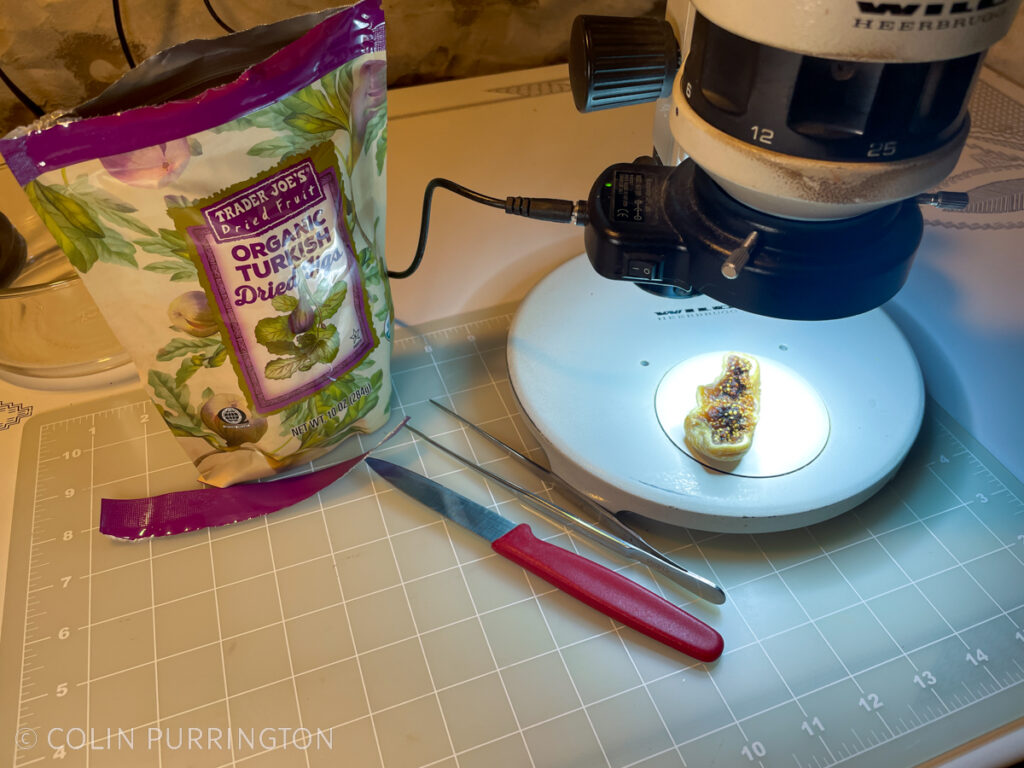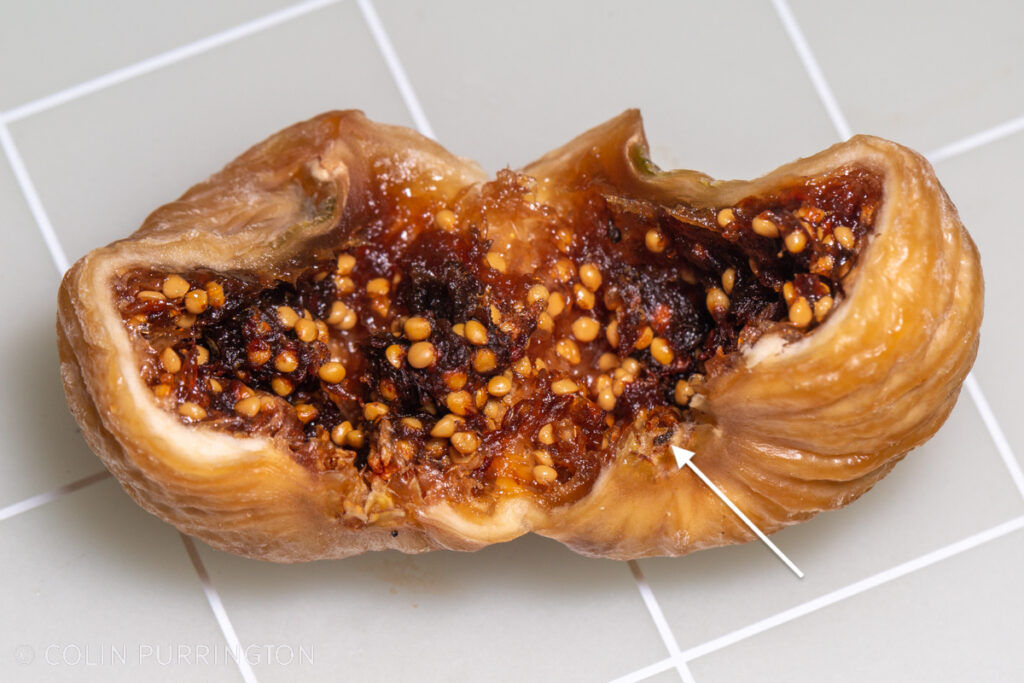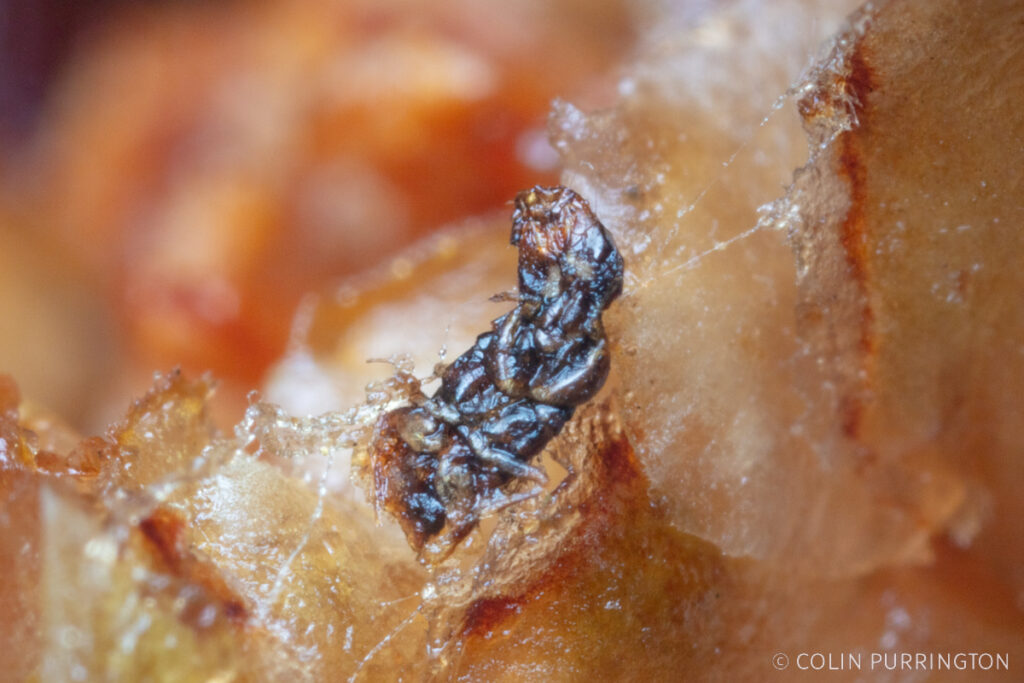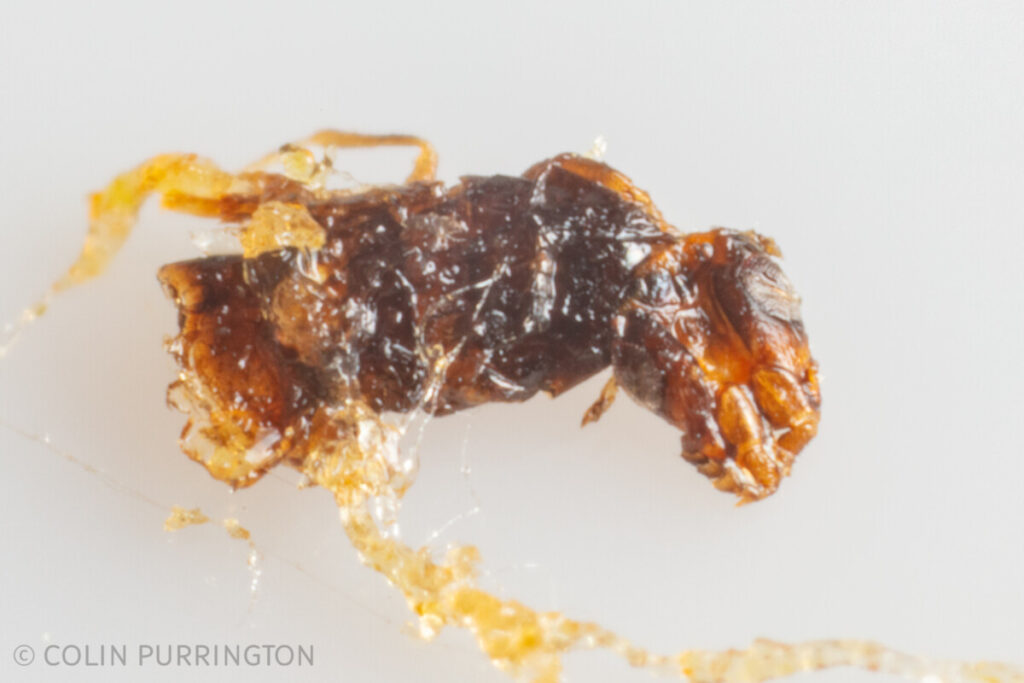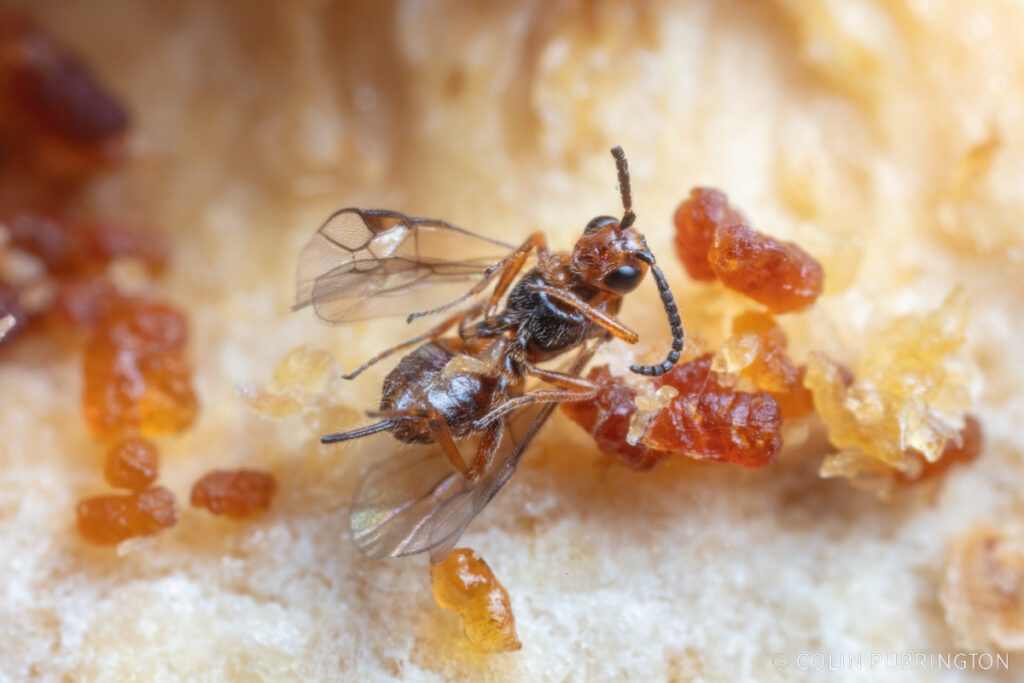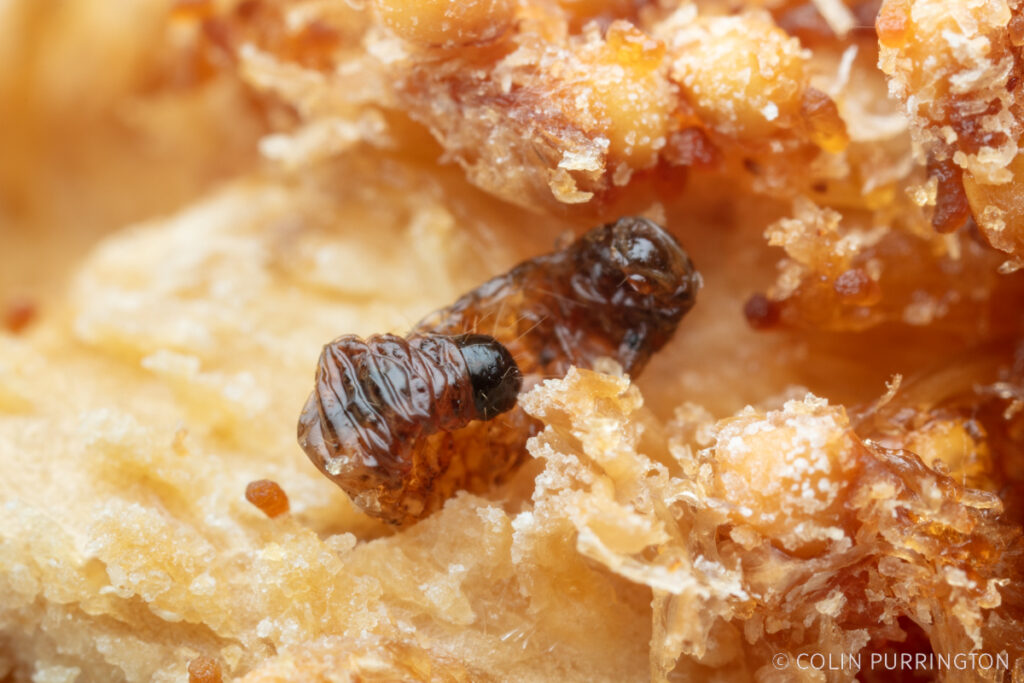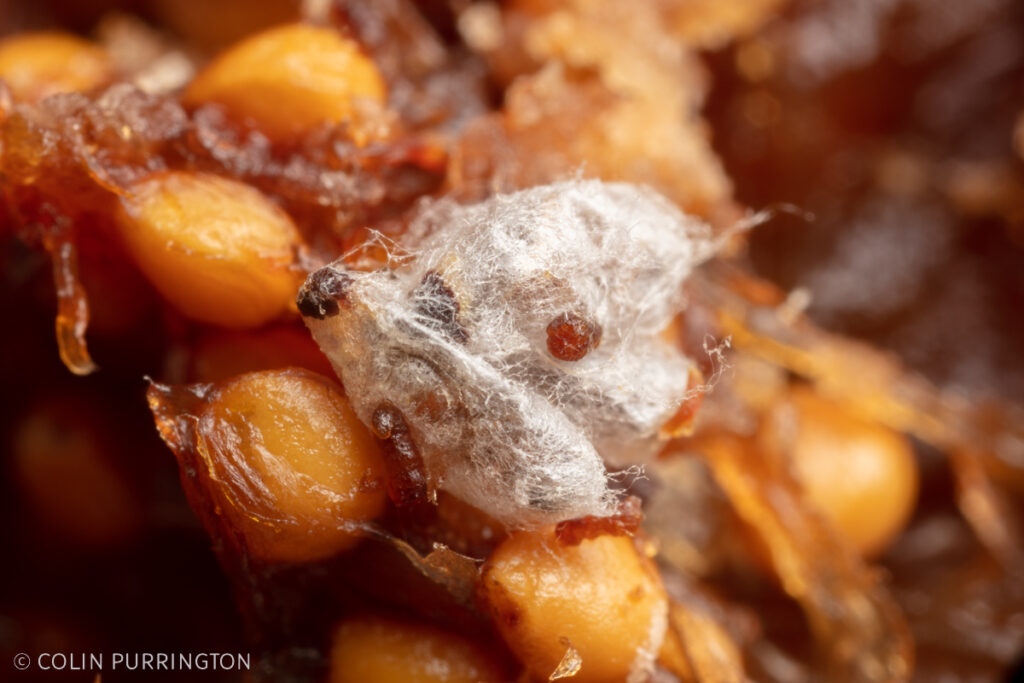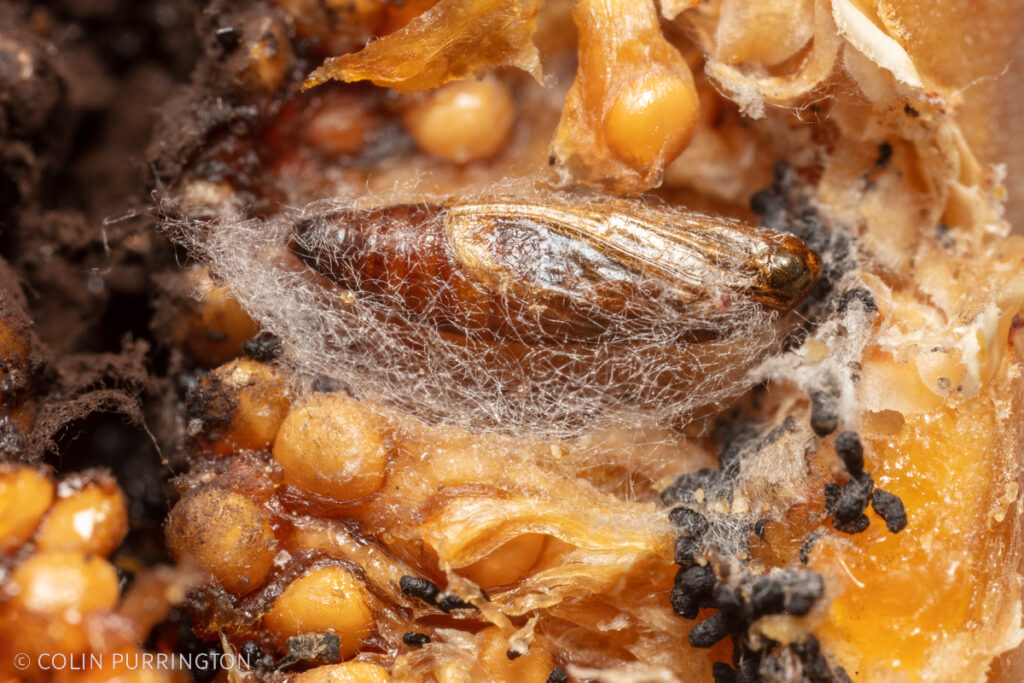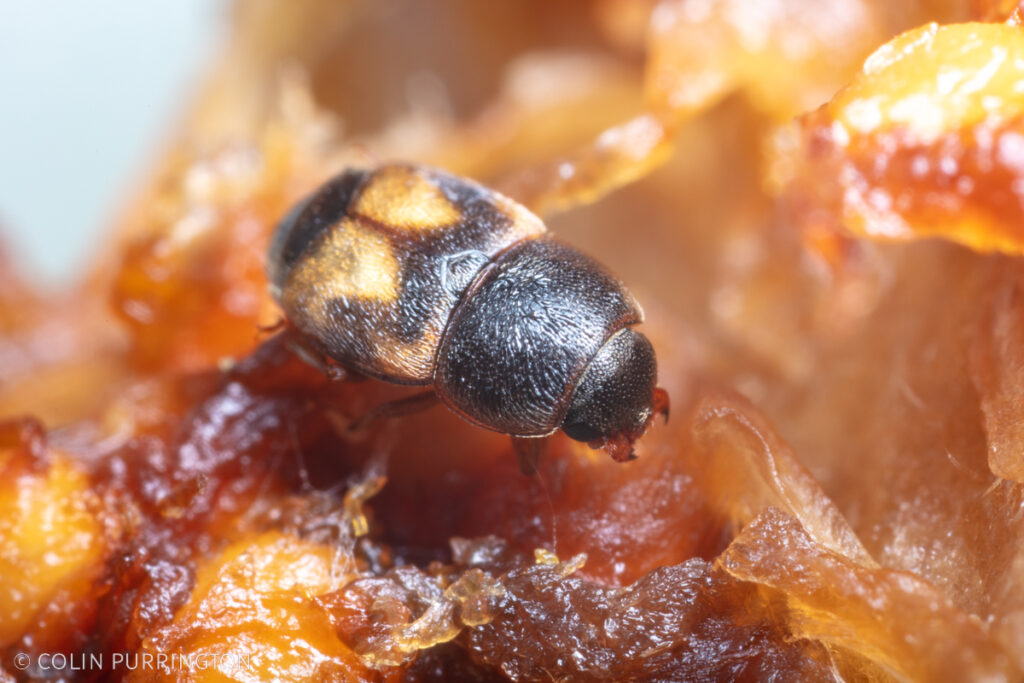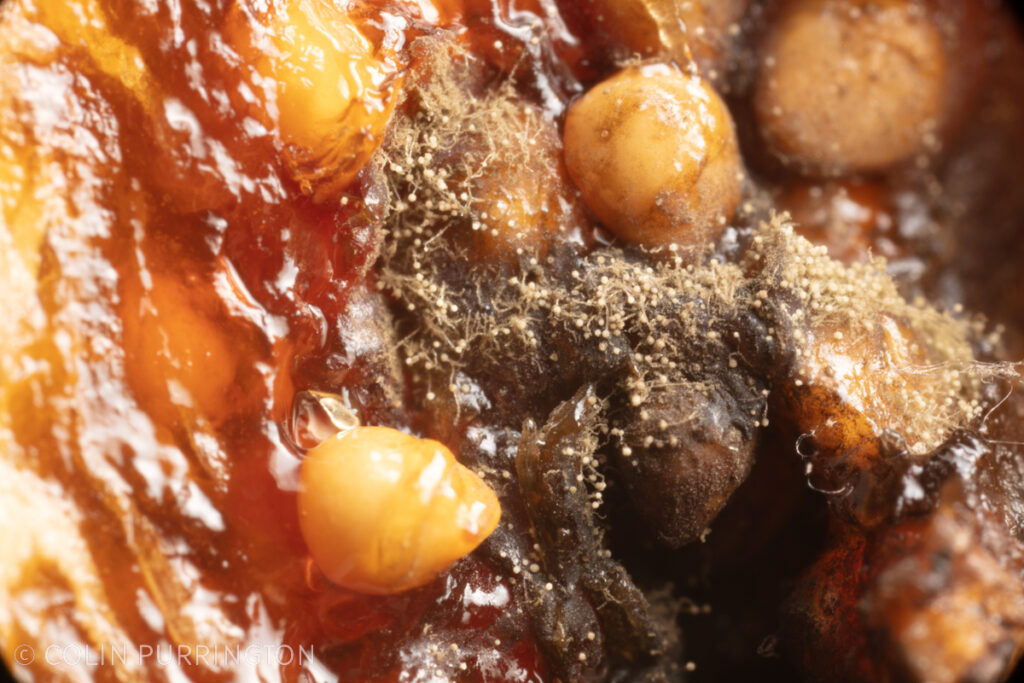I thought I’d write a post about puncture vines (Tribulus terrestris) in case anyone out there is wondering what to do about them. By way of introduction, below is a photograph of the bottom of one of my shoes after a short run in Madras, Oregon. Those are puncture vine burrs (91 of them, counting both shoes), all picked up during the approximately 10 seconds when I ran through a segment of Cowden Park.
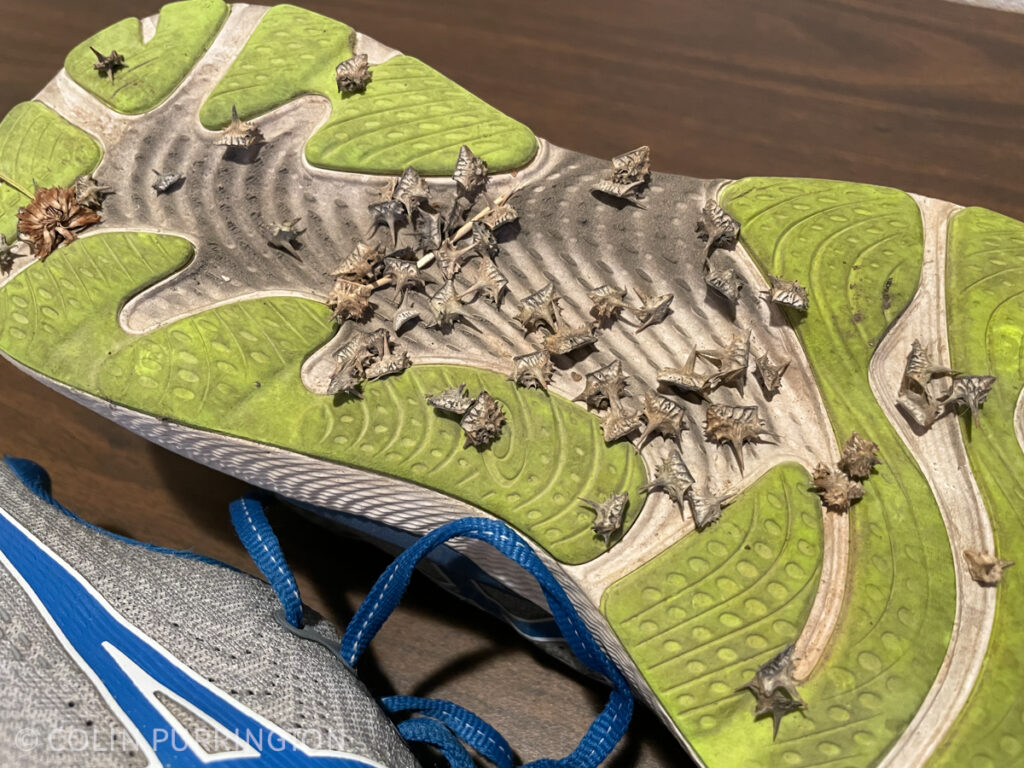
The spined fruit functions like a caltrop (or tribulus), a barbed, stationary weapon that can pierce footwear. The spines can lodge in dog paws and puncture bike tires. Below is a close-up.
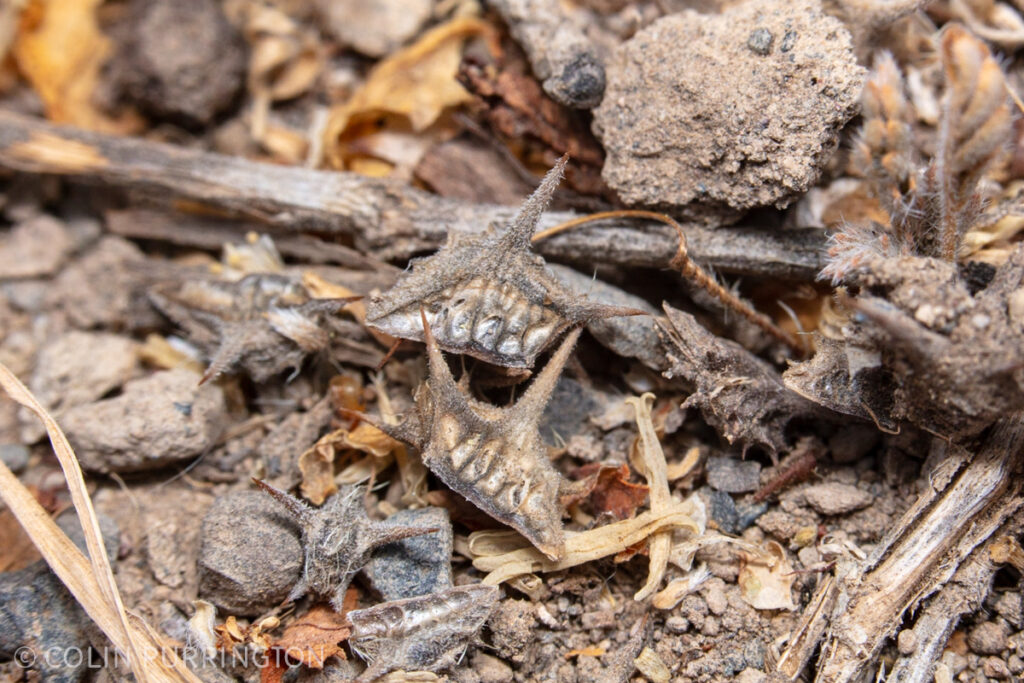
The plant itself looks harmless, but if you see it on your property you should kill it on sight. It can produce hundreds of seeds per year.
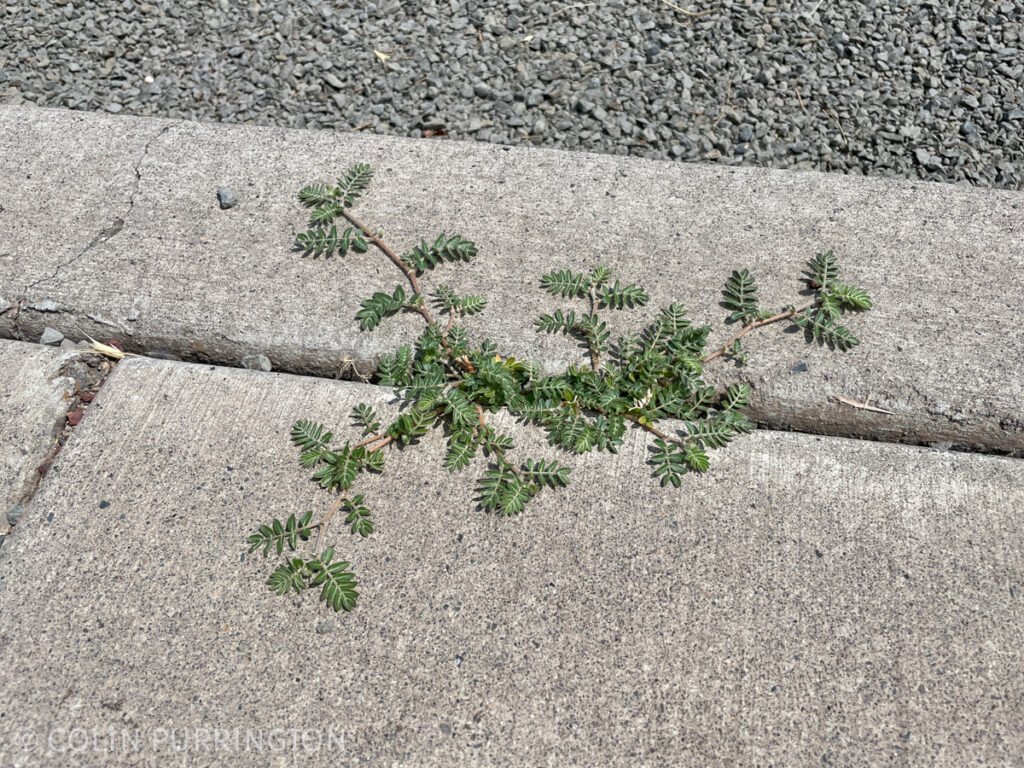
In Oregon, you should report an infestation to the Oregon Invasive Species Online Hotline. You can also search the associated database to see where the weed has already been reported and whether state or local officials came and dealt with it. And if you live in Madras, Oregon, they have a website devoted to the weed, and apparently can fine residents $500 (per day) for allowing the plant to grow unchecked. If you live in a town that has the species but that doesn’t have a group working to fight it, start one.
How to control
According to message boards on the topic, it takes about three years of killing puncture vines to achieve success, so stick with it even if it seems futile. When you walk around your property, always take a tool that can pop the plant out along with most of the tap root (they come out very easily). For weeds like that I really like to use a long-handled puller, the kind with two angled tines at the tip. I also have a smaller version.
In addition to getting rid of the plants, you might also want to get rid of as many seeds as possible. For that, you might invest in a contraption called the Goathead Roller ($295). Per photographs online, small kids can easily push it around. More extensive options for larger properties can be found at stickerburrroller.com. A cheaper option is to attach pool noodles at the end of a paint-roller arm. Or attach the noodle to a chair frame (see on YouTube). For small areas some people have good luck laying down a cheap carpet and then walking around on it, then throwing it away. You can also suck them up with a cordless vacuum (YouTube).
If you live in Arizona, California, Nevada, New Mexico, Texas, or Utah, you might try to procure some puncture vine seed weevils (Microlarinus lareynii) or puncture vine stem weevils (Microlarinus lypriformis), species that were introduced from abroad for biocontrol. Arbico used to sell them but apparently no longer, so interested parties should contact their respective state department of agriculture to find a source.
My 2 cents
This plant is a master at using shoes to disperse to new areas, so I think more parks with infestations should install benches with signs that say, “Please take a minute to de-burr your shoes before leaving so that puncture vines don’t spread.” And there should be two pairs of pliers attached to each end of the bench with cables, just like those pens at the bank.

